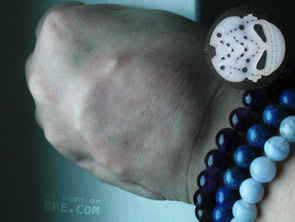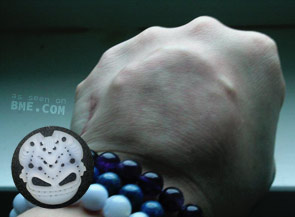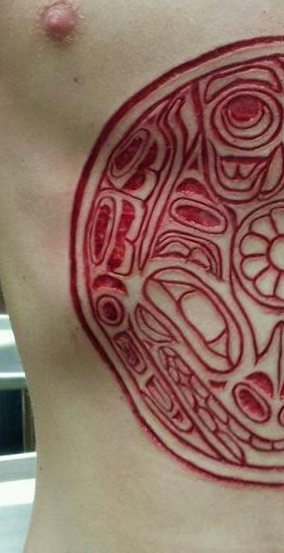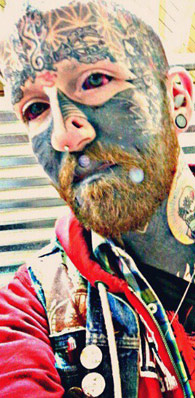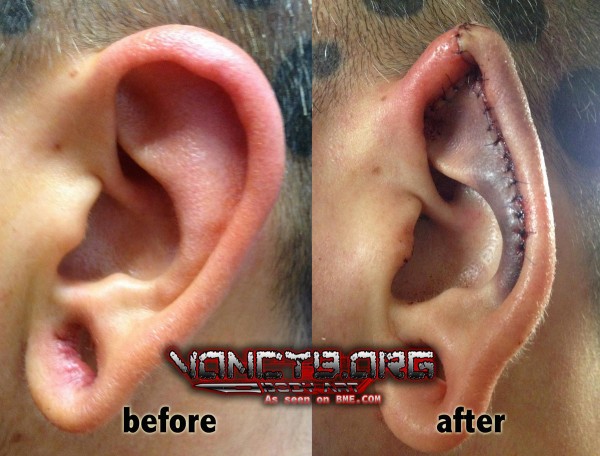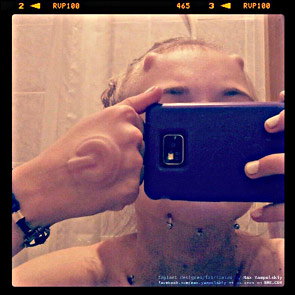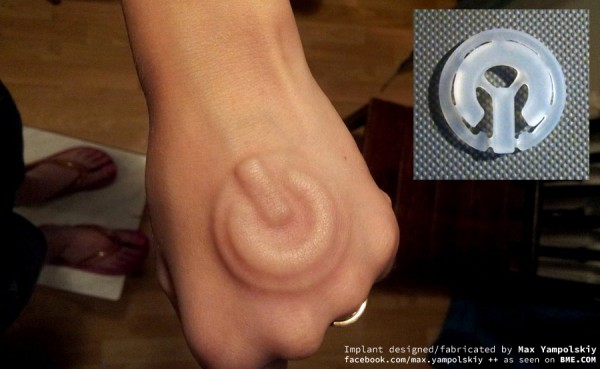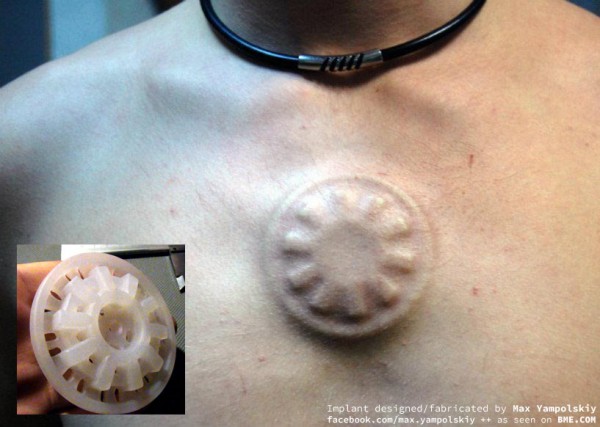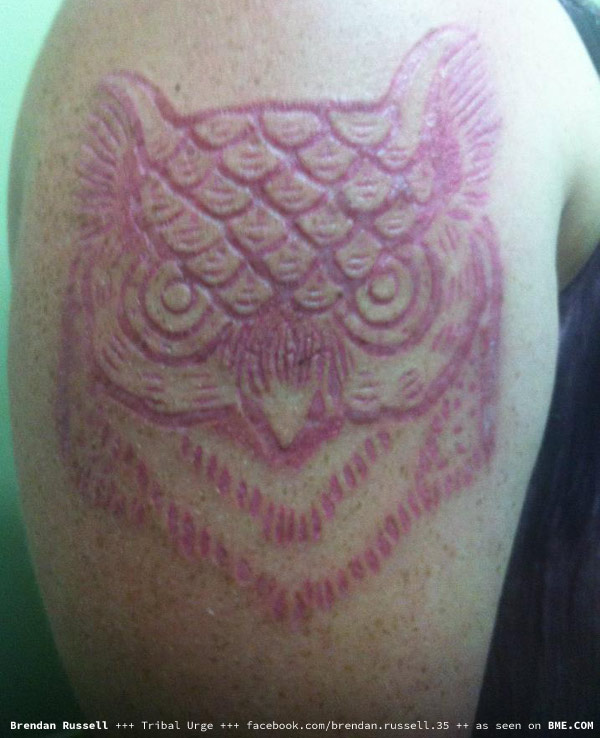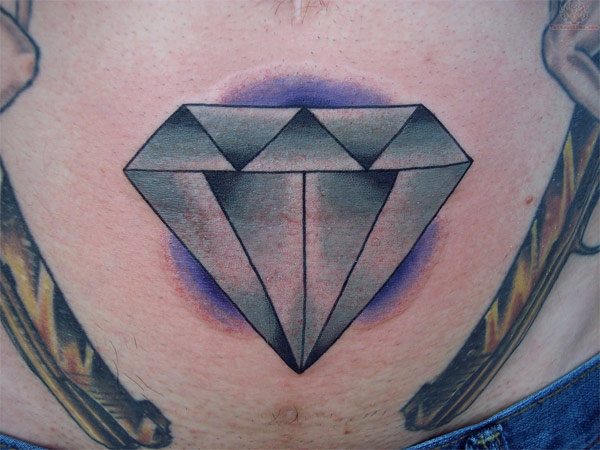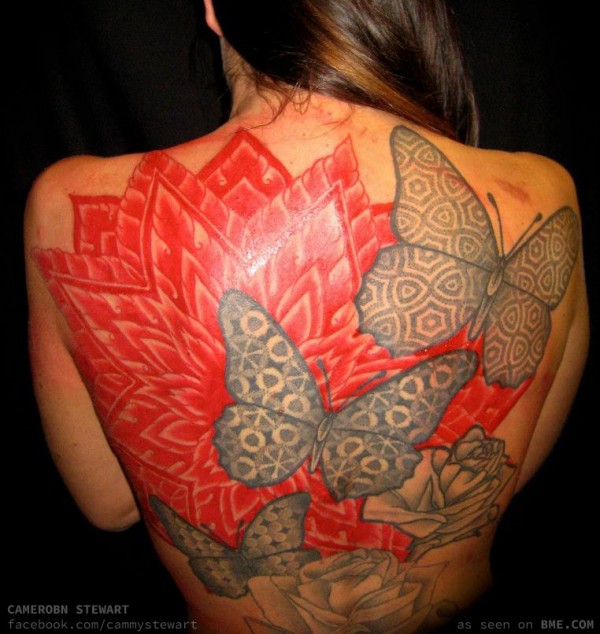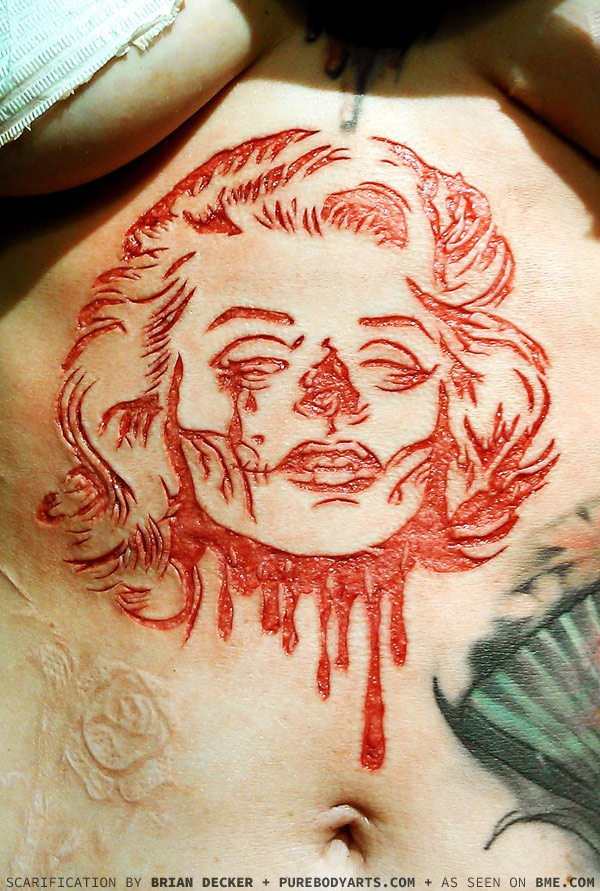…but is it a Stormtrooper virtue?
Ever since it was mentioned in September, people ask me regularly what’s going on with the stormtrooper-shaped implant. Unfortunately not much to show yet — the pictures in this entry of Damaris’s hand implant are only three months old, and it’s hard to make out in photos even if you know exactly what you’re looking at. It doesn’t help that right after getting the implant done, Damaris had the bad luck of standing next a women with certain shortcomings of balance, who grabbed her hand to save herself from a fall — “I’ve never felt pain like that before!” — and caused it to shift from it’s originally straight placement. That said, some implants can take a year or more to really show their maximum detail, so it’s not necessarily worrying. I’ll continue to update on the healing of this over time.
